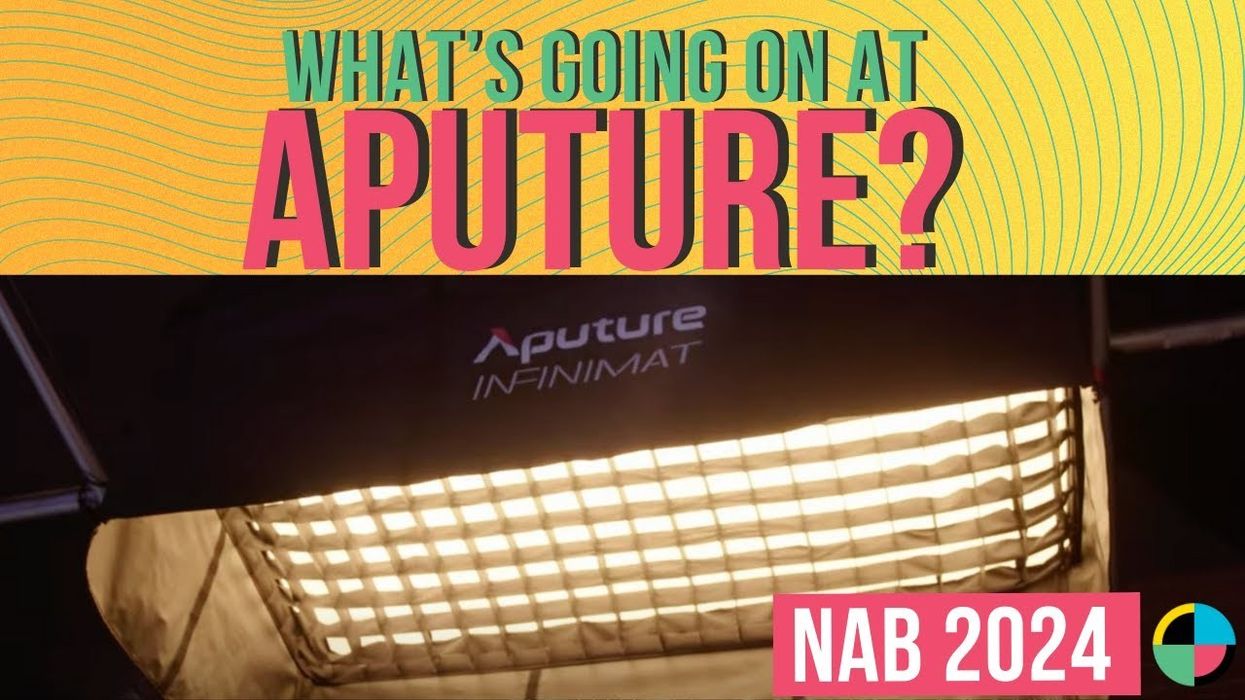Oscar-Winning DP of 'Life of Pi' Claudio Miranda on Drones and Experimenting with New Technology
Oscar-winning DP Claudio Miranda, ASC discusses experimenting with drones and other technology.
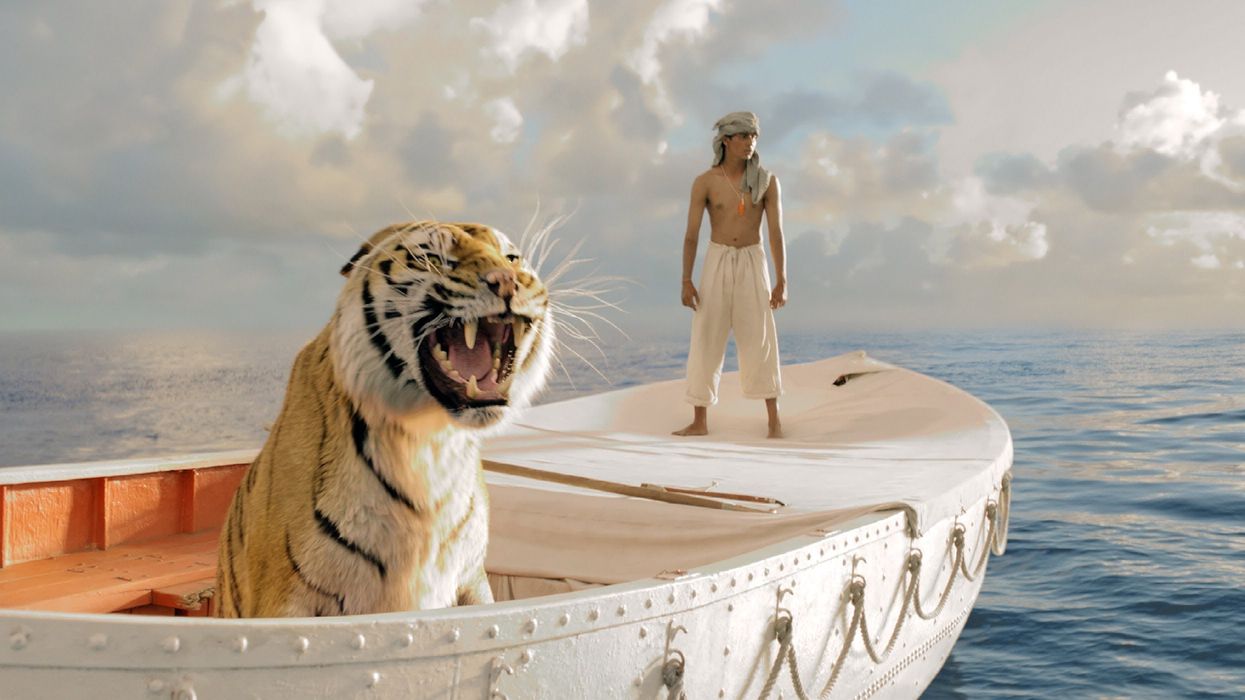
As new technology influences the entertainment industry from all ends, it has become imperative for up-and-coming filmmakers to keep up with all of the latest trends and innovations. Few areas have had more technological advancement in recent years than with the camera itself. Some DPs struggle to adapt to an ever-evolving environment; others, such as the brilliant Claudio Miranda, ASC, have thrived in this new world.
Ever since breaking onto the scene just over a decade ago, Miranda has been among the most prolific DPs in Hollywood. His work continually integrates new technology, whether it be the de-aging tech of The Curious Case of Benjamin Button, the vivid 3D world of Life of Pi and Tron: Legacy, or the innovative lighting techniques on Oblivion. Miranda is one of the most exciting cinematographers working today, and he always finds a way to make his stories visually engaging.
"The whole 'I’m a RED guy,' or 'Sony guy,' or 'Alexa guy,' doesn’t really matter. It’s just about what’s going to get your job done."
Miranda recently took the time to speak with No Film School about a new passion project he shot for his daughter, as well as the importance of planning, his favorite and least favorite movie-related technologies, and his experience working with drones.
No Film School: How did you and your daughter come up with the idea for this music video?
Claudio Miranda: My videos are always oriented around tests for movies [laughs]. In this case, I wanted to test a drone for my next film at the time, which was Granite Mountain. I’m not really someone who likes doing the chart. That’s pretty dull. When I test cameras or lighting gear, I come up with little ideas so that I can shoot my kids [laughs]. For this one, it started with the drone and then we just kept the theme up.
For these things, the budget is just my own time— whatever I put into it. It’s not really related to finances, and a lot of the time people will do me favors. In this case, I had been helping DJI with their drones, so they helped out.
NFS: Can you give a quick primer on the drones that you used?
Miranda: It’s an Inspire 1 and then a Mavic for the beach. The one critical thing I did was put NDs in there, so it wouldn’t have an overly staccato-type shutter angle. I kind of fought it. I kept it a little more filmic.
"You have to find a way to take tools that are out there and try to do something unique with them."
NFS: Are you a fan of new technology, like drones?
Miranda: All technology is advancing rapidly, with cameras and drones and everything else coming out. There’s a bit of an over-onslaught on drones right now because it’s become so simple. You have to find a way to take tools that are out there and try to do something unique with them. There’s nothing more boring than the obvious.
I test all of the DJI stuff though, so I did a short film for the launch of the Inspire 2, called The Circle, where we used it in different ways. That was testing out early beta versions of that drone.
NFS: You had a good experience shooting this music video with the DJI equipment, then?
Miranda: It’s funny; I shot all of these locations back in the old days when I was doing tons of music videos. I knew these locations very well, but I still scouted them. I didn’t just show up. That’s a big part of it: planning so that you can be as successful as possible with your shoot. Planning makes your life easier. I went there the day before and found where I was going to be, and did a little scout drone before I brought my daughter and everyone out there. That way we could maximize the day.
"My videos are always oriented around tests for movies."
We shot until the sunset to try to get that golden light. We did that for pretty much all the locations. They don’t really allow you to shoot at beaches, technically, so I didn’t go there with the big drone. I think I’d have been busted, especially since I’m not getting paid. I’m the status of hobbyist at that point.
NFS: When you’re using a drone, do you generally operate it yourself?
Miranda: I am a pilot. I have my 107, so I’m not a total rookie. I’m legal for flying, and my camera assistant is the same. The two of us work together as a team when we fly drones, and we’re really safe around set.
I kind of do the simple stuff. There are guys out there that do this all the time and are probably better at it, especially for going crazy through buildings or whatever, but a lot of the stuff I do is really simple. It’s just a POV. It’s out there; it’s a high-wide, it’s not that complicated. I don’t feel like I need to be Mr. Hot Dog all the time.
"On The Circle, we explored all the stuff we could possibly do with a drone."
NFS: How do you see the industry adapting to drones as they become more and more functional?
Miranda: I think it’s just one of the tools. You just have to figure out what you really need. With The Circle, I wouldn’t necessarily say that’s the way you should be making films; it was just the task at hand.
I really like dolly moves. I like shallow depth-of-field. So when I shot that piece, I shot wide open at times, I shot at night, I put the drone on a dolly and track, and we did the hostess tray. The drone was kind of acting like a remote head at times. It was actually just a lot of standard filmmaking.
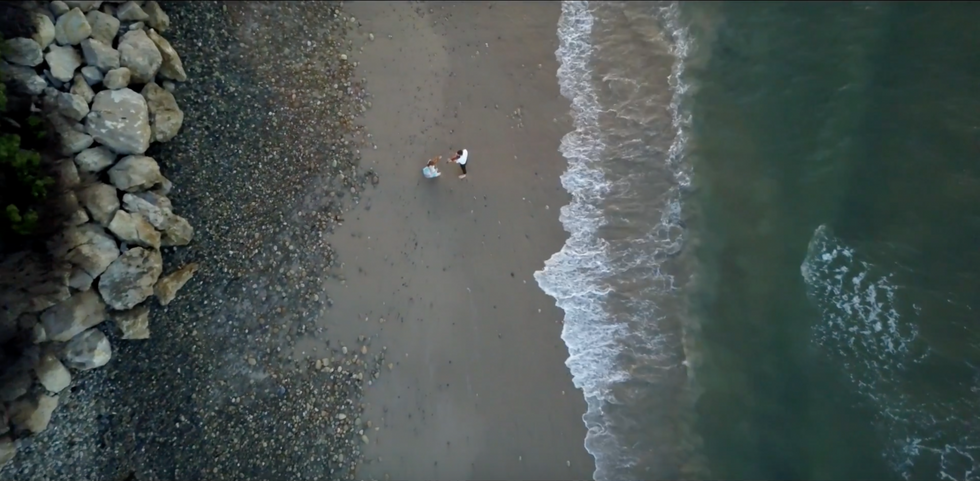
Miranda: I was intrigued by the ideas around how to do this job only with the drone and keep it cinematic, though. I tried to keep the moves as close to how I would try to do them in a normal film, but there were advantages of having the drone. There was this top shot coming down over the bed where it was really nice to have this little remote head and be able to do this really simple, lowering downward with just some line and some pulleys. Normally, that would have to be done on a set, and you’d have to lose the roof for the crane, but we did that shot for no money in comparison.
NFS: That sounds like a really interesting experimental project.
Miranda: Yeah, it was sweet. I think you’d actually be surprised that it was shot with a drone. The script wasn’t drone-y. It wasn’t war scenes and chasing race cars or anything like that at all. It was just a period piece, and you read the script and you kind of wonder why we’re doing drones. We did some handheld with it and some handoffs. We explored all the stuff we could possibly do with a drone.
"I’m not a big fan of small cameras, so I thought this camera was going to be a failure."
NFS: Do you think you’ll start to incorporate drones into your work more often now?
Miranda: I think the music video proved that it could work. We ended up actually shooting with the Inspire on my latest movie, which is fluctuating in titles, but it’s the firefighter one: Granite Mountain Hotshots. I showed a rough cut of this music video— I don’t think it had the beach in it yet— to the studio, and I showed it to Joe Kosinski, the director, and I projected it on a 60-foot screen, and it held up pretty amazingly well.
Normally, I’m not a big fan of small cameras, so I thought this camera was going to be a failure. But after testing it in the environment to see how it was, it actually turned out to be really great. For Granite Mountain, we ended up on a DJI 600 with the X5R, and we shot RAW, and it turned out phenomenal. I was actually pretty blown away with the whole result. Joe and I just thought it was so convenient for us that we could be able to be on a peak and decide to get a shot and have it be so simple to do.
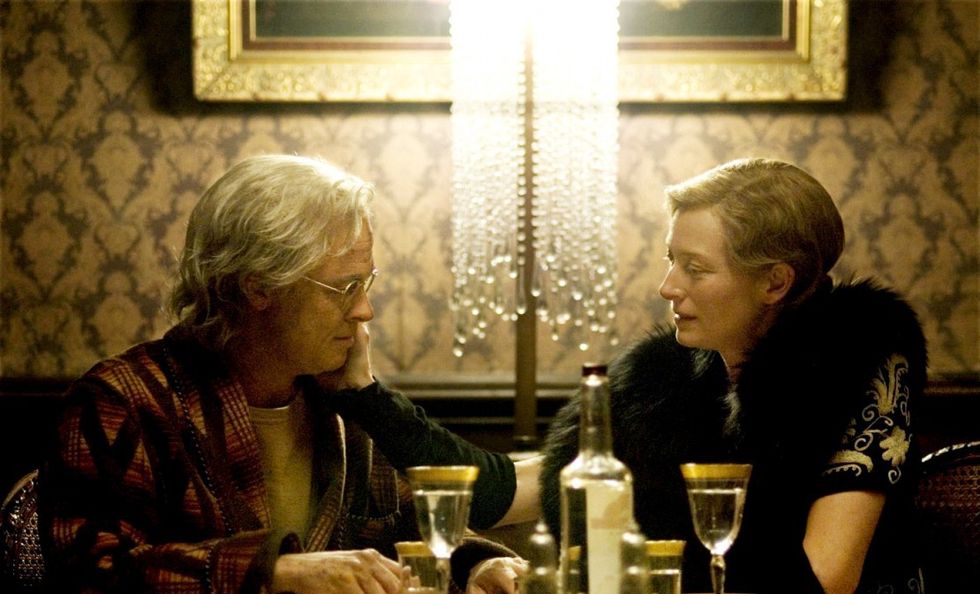
NFS: You and Joe Kosinski have combined for some really cool visual stuff together.
Miranda: Yeah. And obviously, Joe has been named for Top Gun, so that kind of ties me into that as well. That seems like a pretty drone-y movie, right? [Laughs] Top Gun is going to be fun.
I’ll do what I always do for movies— we’ll test the best gear, camera, drone, whatever it is, and we’ll just see what’s right for the movie. When I look at cameras in general, I look at highlight, whether it’s banding, if there’s any ringing, how’s color production. How is this going to fit with our movie?
A lot of people get focused on name brands, and I just think that’s a mistake. You’ve just got to find a camera that can do your movie. The whole “I’m a RED guy,” or “Sony guy,” or “Alexa guy,” doesn’t really matter. It’s just about what’s going to get your job done for the task at hand. It should be regardless of labels.
"Maybe I’m just old. I don’t find VR that exciting. "
NFS: You’re often at the forefront of technology with digital, 3D, and the 360-degree thing for Google. Are you trying to stay ahead of the curve, or are you just always testing stuff out because it’s fun?
Miranda: I’m not a fan of 360. I think it’s a weird way of telling a story. As a viewer, you get in and then you’re wiggling around for the first time, but then you settle in, and you just want to see the story. You don’t feel like you want to exercise your arms and wave your head around to figure out what the story is.
Maybe I’m just old. I don’t find VR that exciting. Maybe for games— you know if you’re playing Halo 8 or whatever, maybe that’d be interesting. But I don’t know if I find it interesting as a story. For me, lighting-wise, VR or 360 is a fricking nightmare. You can have a beautiful backlight in one direction and horrible front light and camera shadows in the other direction. It’s a compromise in a real environment, and it’s so hard to compose lighting.
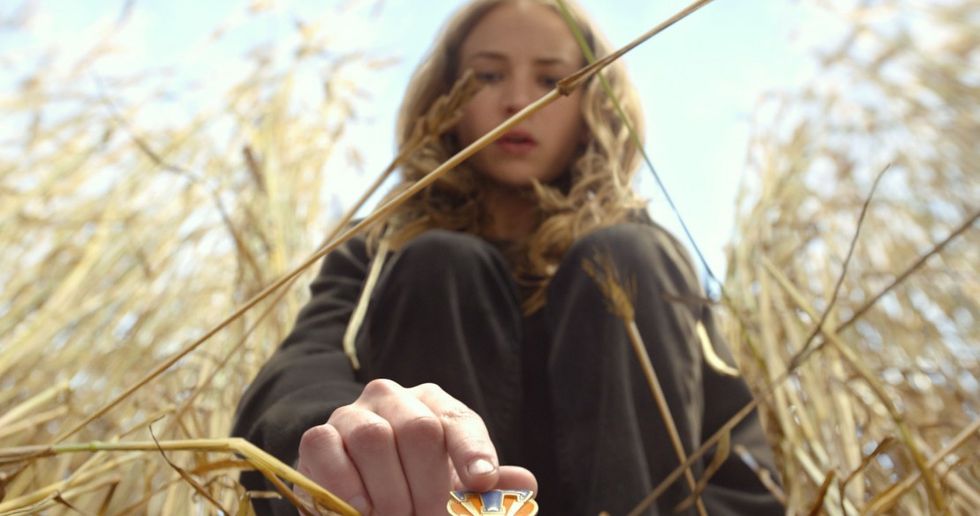
Miranda: There’s new technology that I love, though. I love HDR, high dynamic range, in movie theaters. Dolby Digital is amazing. We did some stuff on Granite Mountain where we let the fire rip a little bit more in the HDR, and you really feel the heat off the screen, which I think makes it more powerful. And the primary thing I love about HDR is that the blacks are really good. It kind of takes the gauze away from the screen. With standard screens, blacks are never truly black. Dolby Digital makes things look more three-dimensional without being 3D.
NFS: You rose up through the ranks doing lighting work. How involved are you in lighting nowadays?
Miranda: Oh, pretty seriously involved with lighting [laughs]. That’s still a strong point of mine. I’m always trying to figure out new ways to light things. There was a thing I did on Oblivion which was all projections that became a big deal. But I’m very involved with that— the gaffer didn’t come up with that. I know that some gaffers light for DPs. For me, no [laughs]. They can give me ideas, and I don’t care about cables and that stuff, but I’m still very involved on that side and choosing what I want to use and in creating things.
"I’m always trying to figure out new ways to light things."
NFS: What was it that helped you make the jump from gaffer to DP?
Miranda: I wound up shooting some music video for DMX, and then for some reason, I clicked with that director. I thought it was a strange world to be in because I was doing more gaffing features at the time, and then I was suddenly doing all these Snoop Dogg and DMX music videos. I was kind of a flavor of that time. There were like five of us that kept working in that world constantly, and that got me excited about being a DP.
Then I did a movie called Failure to Launch, which I didn’t really like, but I did it because Scott Rudin was part of it. I knew Scott Rudin was also doing The Curious Case of Benjamin Button and I saw a bunch of things that I thought were connected. I didn’t feel like I could just do Benjamin Button from scratch without any studio movie, so I did Failure to Launch. The director kept on telling me it would be better, and it never was better. But then Fincher gave me Button, and that was kind of where everything got launched from there.
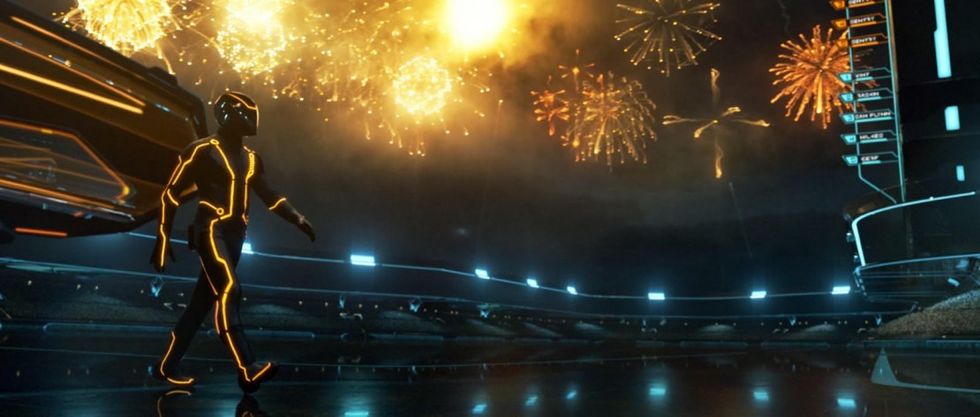
NFS: Getting started with Fincher—that’s got to be a pretty cool way to get going as a DP.
Miranda: Yeah. I did his early music videos back in the day. I did a lot of his Madonna videos, so Fincher knew me. I gaffed Fight Club; I gaffed The Game, I did reshoots on Se7en.
NFS: And you worked on Zodiac too, right?
Miranda: I did some reshoots, uncredited. That was kind of where he tested me. We got along, and then we did this really horrible Orville Redenbacher job. It was really freaking awful. David did it to prove that he could replace heads on actors for Benjamin Button, so that’s kind of what the job was about. I think that’s the worst commercial I’ve ever done.
NFS: Do you have any last advice for aspiring DPs?
Miranda: Be unique. Find the tools at hand, be efficient, and don't be brand-named at all. Find the best thing that works for you.
I like simple. I light a lot with practicals. I’m not really a big heavy-hitter as far as lighting, but that’s my style. But someone else’s style could be pounding lights in. If that’s your thing, then that’s awesome. My advice is to don’t try to be me; just try to be yourself. Your own experiences are going to tell you how you light and shoot things.
